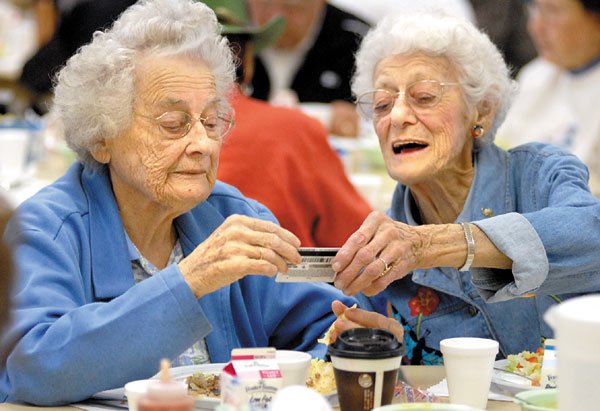A 10-year plan to address Santa Clara County’s exploding senior
population has fallen woefully short of its goals, according to the
Civil Grand Jury
– a claim that some member agencies dispute.
Gilroy – A 10-year plan to address Santa Clara County’s exploding senior population has fallen woefully short of its goals, according to the Civil Grand Jury – a claim that some member agencies dispute.
The stakes are high: As baby boomers gray, the number of county seniors could double, reaching 428,300 by 2020 – more than 20 percent of the population. Some analysts have called it an “Aging Tsunami,” as Californians live longer.
That puts pressure on senior services, some already suffering from slashed budgets and lengthy waiting lists. In 2005, the county partnered with San Jose to sponsor a strategic plan, “Community for a Lifetime,” outlining the needs of county elders. Transportation and information topped the list, as seniors strained to understand what services were already available to them – and to get to them.
“It’s a collective effort to address the issues, maximize resources, and do it in a coordinated way, so we don’t have a lot of fragmented services,” explained Marilou Cristina, Division Director of Older Adult Services for Catholic Charities, a member of the plan’s Leadership Group, which comprises dozens of nonprofits, agencies, officials and cities, including Gilroy.
At Gilroy’s Senior Center, program coordinator Ty Ashford observes that Gilroy’s seniors tend to be lower-income relative to other county seniors. Most of the elders who flock to the center’s cafeteria for $2 lunches once worked in the Gilroy cannery, he said, earning working-class wages on the canning line. Their needs are concrete: affordable housing, transportation and health care.
“I have a very sick husband, and all the things I need for him are costly – medicine, attendants to check in once in a while,” said Helen M. Hanson, an 85-year-old Senior Center volunteer. “It’s hard, but the Senior Center has been so helpful. A $2 lunch – I don’t know where you could get this.”
Services like that could go under pressure, as more and more people require them – and that’s why agencies created the 10-year plan.
Lack of coordination and leadership, jury finds
But the plan hasn’t been implemented, said Ronald Layman, foreperson of the Santa Clara County Civil Grand Jury, which inspects public programs. Less than half of the plan’s immediate goals were accomplished by August 2006, 17 months after it was released, Layman said. No timeline exists for the plan’s immediate goals.
Among the unmet goals are a senior home repair consortium, senior-focused Web sites for each city, and subsidized senior taxis. Some goals were achieved independently by the city of San Jose, Layman added, but the plan has faltered without clear leadership and coordination between its assorted agencies.
“There’s been no coordination at this point,” Layman said. “There was no selected or identified representative to be the chair. San Jose became the principal facilitators, but the people weren’t able to get together enough to even define an agenda.”
The Leadership Group met only once since December 2004, and accomplished little, the grand jury reported, resulting in a denial of services to older adults. To fix the problem, the jury recommended that a Joint Powers Authority step in, a government body empowered to take action without sending members back to their respective agencies for approval. JPAs can directly sign contracts, for instance.
“There shouldn’t be much additional cost,” said Layman, “but what it should do is get people more in line, and keep people from going back to three or four councils and the Board of Supervisors before they take any action.”
Recent progress not included in jury’s report
County supervisors have 90 days to respond to the report, but its findings have already stirred frustration among some members, who said the report overlooks some accomplishments. In late August, after the jury finished investigating, the group convened an Executive Council that meets twice monthly, said Cristina. A newly-hired project coordinator is reconstituting the Leadership Group, she added, finding representatives to replace those who have left member agencies since the group first met.
“A significant body of work has taken place since [August] that has not been captured,” Cristina said. “Their information wasn’t updated. We expect much more to happen now that there’s a coordinated effort.”
Layman said that the chair of the board was given the grand jury’s report two days before it was officially released, and didn’t mention any missed accomplishments, but “often, when they find the grand jury’s looking into it, things speed up a little bit.”
Betty Malks, director of the county’s Department of Aging and Adult Services, said the group was preparing its formal response and declined further comment. Neither Don Gage nor Roland Velasco were available Friday or Monday to comment, occupied by county budget meetings.
As agencies grapple with the grand jury’s findings, increasing senior needs are looming. Elder abuse has jumped 25 percent each year from 2003 to 2006, but funds for the state’s Adult Protective Services Program are expected to fall $65 million short. Malks said the shortfall forces county APS to focus only on extreme cases, and to close each case as quickly as possible.
Still, progress has been made: San Jose is training Senior Center volunteers, a Networkofcare.org Web site was built, and the countywide “211” resource hotline has been established – but Gilroyans such as Ashford weren’t aware of the latter, which directs callers to county services. Ashford was excited to learn about 211, and said he’d add it to the Senior Center newsletter, which includes a resource list.
Between games of bridge, Hanson said senior needs can be daunting – but some are quite simple.
“Being kind to each other,” she said simply. “We all need that.”















